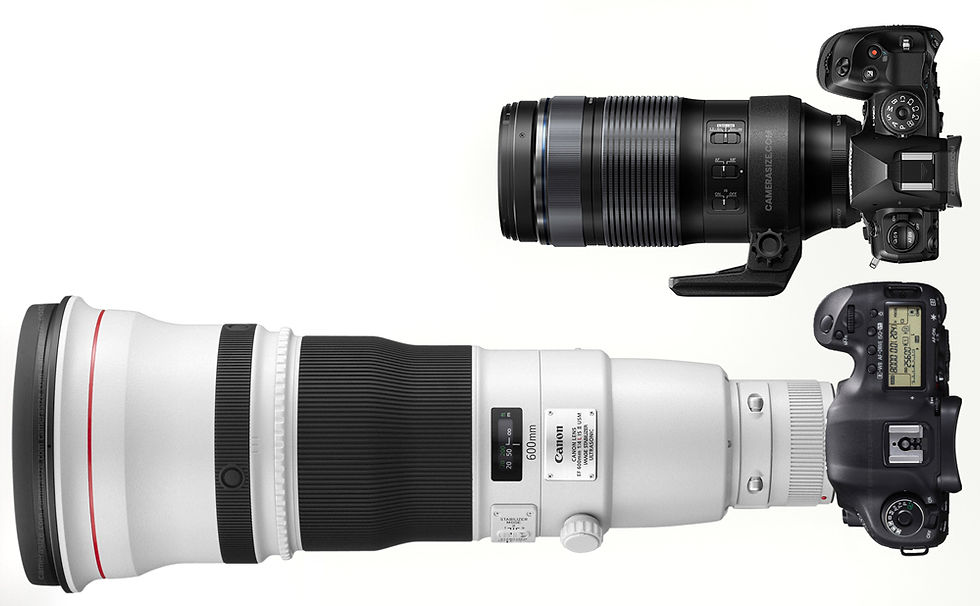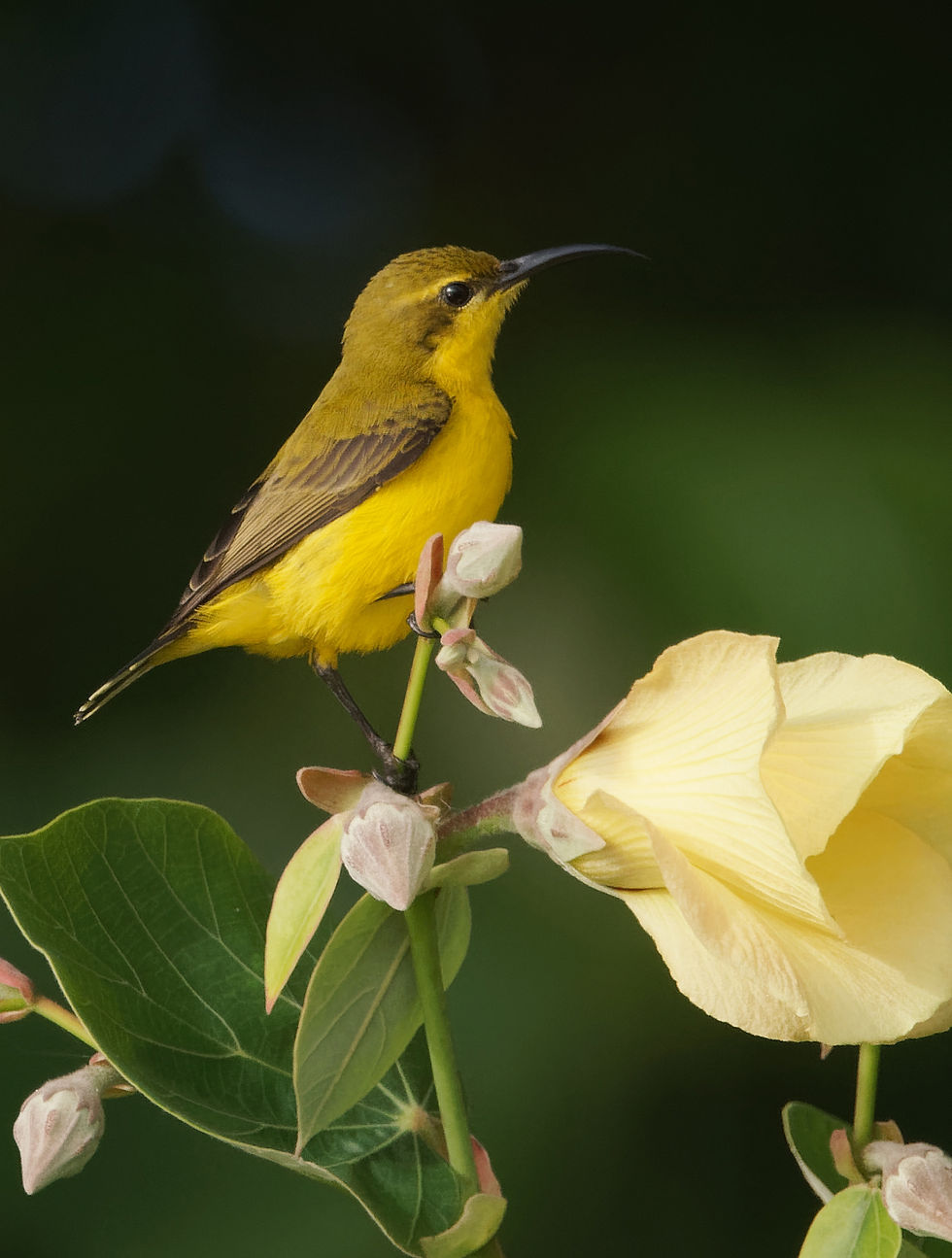I read a lot of photo-centric articles, online and some in print, about 'the perfect travel lens', or 'the best wildlife lens', or 'what lens to buy for shooting sport'. The list of lens-oriented advice is endless.
Apparently everyone has an opinion, some of it born from actual experience, but a lot of it I suspect, is fuelled by a driving need to produce content at all costs - or perhaps to include products that are sponsored by advertisers, however spurious those products might be in relation to the topic.
I recently enjoyed a trip to far north Queensland in the hope that I would find and photograph a bunch of really exotic tropical wildlife. In the weeks running up to the trip, I began to review some of those 'best lens' feature articles in the hope of finding a decent zoom lens for wildlife. (When I write 'best lens' it means one that has a big magnification but is also affordable).

A few years ago I spent five days in Pilanesberg National Park (about 2 hrs drive from Johannesburg) and while there visited one of its excellent bird hides. At the time I owned the excellent but very heavy Canon EF300mm f2.8 lens. There was a photographer already in the hide, wrestling with an even bigger Canon lens than mine. It dwarfed my humble 300mm lens - I got chatting and asked about the lens - turns out it was the EF600mm f4 IS L series lens. I jokingly said "you must have sold the house to buy that lens" and his reply was "I did...". I thought it not prudent to enquire further - I knew that birders always bang on about needing an 800mm lens for best results but I wasn't going to spend $20k+ on my hobby.
For Olympus users at least, my search for the ultimate wildlife lens was a short one. I didn't need to sell the house - just my car so I could consider buying Olympus' most powerful four thirds lens: the Olympus M.Zuiko 150-400mm f4.5 TC1.25 IS Pro which sells for around $11,000. Nice lens, if you can get one (there's a backlog). It has great reviews but I kind of like my car so I went in search of something more affordable, eventually splitting my research between Olympus and Panasonic zoom lenses (the 4/3 system was originally invented by these two tech giants, so luckily both lens ranges are fully interchangeable).
My purchasing criteria was to spend around $2000 or less if possible. I already own the marvellous M.Zuiko ED 300mm f4 IS PRO lens which is pretty good, but then I discovered that Olympus has a 100-400mm zoom lens in its lineup - the Olympus 100-400mm f/5-6.3 IS lens. It actually looks like a PRO series lens but without the higher price tag - one reason why I thought it would meet my requirements. Even more encouraging was the discovery that Panasonic has a similar spec'd Leica optic, the Panasonic Leica DG 100-400mm f/4-6.3 ASPH Power OIS lens - worth a look too.

Apart from buying into a lighter and significantly less bulky camera system, an often ignored reason for adopting a 4/3 format camera is for its effective crop factor. This crop factor relates to the relationship between the sensor size and the focal length - too complicated to explain here. However the important feature to understand is that 4/3 cameras have a crop factor of x2 - this doubles the stated focal length meaning that the Olympus/Panasonic lenses actually have a massive 200-800mm focal length, a focal range that would be, in the full frame world, a waste of time to manufacture because no one could possibly afford to buy it.
So I spent some time comparing the two zoom lens characteristics. YouTube has a few good reviews and, better still, several comparison reviews highlighting features of both these zoom lenses. Opinions across the board were quite positive, although the lenses do show a few practical differences. For example the Panasonic lens is slightly lighter, it has a slightly faster maximum aperture (f4 - 6.3 compared to f5.0 - 6.3 on the Olympus lens) plus it's also a bit lighter (985g compared to the Olympus' 1.120g). Interestingly there's not much difference in the cost - the Panasonic sells for $1900 against the Olympus's $2000 or thereabouts. Lens sharpness was held as being equally as good as each other with the best results being from the shorter end of the focal range with some softening when the full 800mm focal length was tested. So after a month of watching YouTube reviews, I finally bought the Olympus lens - for several reasons: Firstly I was suffering a bit of brand loyalty in the decision making process and as I already mentioned, build quality is very solid which gives it additional weight. Secondly the store I bought it was offering a $200 cashback - never miss a bargain! Thirdly, the tripod mount on the Zuiko lens can be removed, a good idea because it can affect handling. I can also fit the vanity sleeve from the 300mm f4 lens which makes it a lot nicer to hold. And finally, the lens works with the Olympus MC 14 M.Zuiko Digital 1.4x and the Olympus MC 20 M.Zuiko Digital 2.0x converters, which I already own.

So, is it this lens as good as the hype might have you believe? After shooting several thousand frames in FNQ I'm quite satisfied with the quality produced by this lens. I'm not interested in comparing relative sharpness at different focal lengths - most of my subjects are birds so I use the long end of the lens far more often than the short. When compared to the results I used to get with the Canon EF300mm f2.8 lens, this product does not fully stack up quite as well - but then, it's an 800mm lens with a price that's just $2000. Amazingly this lens also has a near MACRO function, focussing down to 1.3 metres - that's an amazing specification for a superzoom, adding another benefit to its list of great features.

For bird photography I use the OM1's excellent subject detection AF mode which works really well - but, if you don't get a good lock onto the subject, particularly onto the subject's eye, then the results are not 100% sharp, irrespective of the focal length. That said, when it does lock-on, the results are very good. I have also found that tweaking the lens sharpness adjustment via DXO's PhotoLab 5 is a very effective way of adding a bit more clarity to an image without compromising image quality of the original .ORF file. There are very few negative points to this lens. Sure the weight is significant - but a million miles off what a full frame equivalent would weigh, if it could be built. I also found that the manual focussing ring does not work very effectively - and this is where Olympus PRO lens design really outshines the regular lens line-up design. Grip the focus ring and push it forward to jump into MF mode - it's that easy - no switching from AF to MF in the menu. Not so with this lens - the focus ring feels as though it slips - sometimes the focus engages, sometimes it doesn't. Not good if you are trying to focus on a subject that's jumping about. Maybe it's a design fault or perhaps it's a mechanical failure? Most of the time I use AF which produces pretty accurate focus so not having a reliable MF function is not an issue to me - it might be to others though.
I also note that a fully charged battery does not last as long when I am using this lens - there's a lot of focus pulling to do across this wide focal length so I suspect it's a heavier drain on power.
Another point to note is that depth of field has very little effect in terms of making a 'just out of focus image' appear clearer as it might with a full frame lens. Now this might be just my poor lens handling but I rather suspect it's actually a 4/3 sensor characteristic. Shooting at the long end of the zoom range (I.E. 800mm) I couldn't see any improvement in clarity when stopping the aperture down to a higher number. Aside from the not insignificant weight of this lens, my only gripe goes to its design. This is clearly an excellent product, way superior in terms of specifications and build quality

As a very affordable alternative to Olympus's M.Zuiko 150-400mm f4.5 TC1.25 IS Pro $11k superzoom, the Olympus 100-400mm f/5-6.3 IS is a fantastic, affordable superzoom that, when handled correctly, certainly produces excellent results. Highly recommended.


Comments